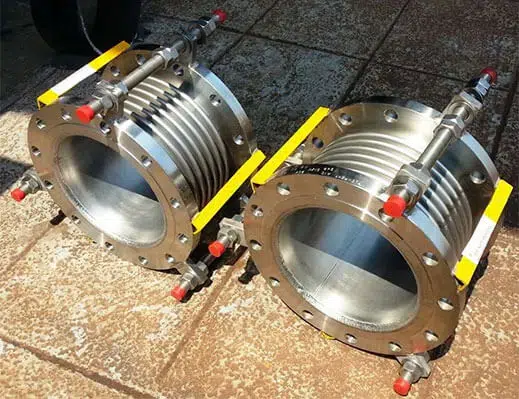Ever wondered what allows shafts and mechanical systems to transmit motion smoothly even at awkward angles? That’s where the humble yet powerful universal joint manufacturer comes into play. These joints may look simple, but they play a crucial role in industries ranging from automotive to aerospace—helping machines move, rotate, and flex without losing power or precision.
What Exactly Is a Universal Joint?
In plain terms, a universal joint (also known as a U-joint) is a mechanical connector that transmits rotary motion between two shafts that aren’t perfectly aligned. Imagine the drive shaft of a car or the rotating mechanism in a factory conveyor—these systems need flexibility without sacrificing torque. Universal joints make that possible by compensating for angular misalignments while maintaining power transmission.
The Key Types of Universal Joints Explained
Universal joints come in several configurations, each engineered for specific functions. Let’s break down the most common types you’ll encounter in industrial settings.
1. Cross-Type (Cardan) Universal Joint
This is the most familiar type—the workhorse of the mechanical world. It features a cross-shaped center piece with four bearings that connect two yokes. The Cardan joint is commonly used in vehicle drive shafts, power tools, and heavy-duty machinery. Its main advantage lies in its ability to handle angular misalignment up to 45 degrees while maintaining reliable torque transmission.
2. Double Cardan (Twin Universal Joint)
If the standard Cardan joint struggles with uneven speed variations, the Double Cardan joint solves it. By pairing two universal joints with an intermediate shaft, this design ensures smoother rotational movement and reduces vibration. It’s widely used in off-road vehicles, heavy trucks, and industrial drives that require stability under fluctuating loads.
3. Constant Velocity (CV) Joint
The Constant Velocity joint goes one step further—it maintains uniform speed between connected shafts regardless of the angle. Commonly found in front-wheel-drive vehicles and robotics, CV joints minimize vibration and wear. According to NHTSA.gov, CV joints significantly improve handling and efficiency in modern vehicles by providing seamless motion transfer.
4. Flexible Coupling Joint
This type uses elastomeric or metallic components to absorb shocks, vibrations, and minor misalignments. Flexible universal joints are essential in systems where smooth performance and vibration control are priorities—think of pumps, compressors, and precision machinery.
5. Ball-and-Socket Universal Joint
Compact, lightweight, and capable of high flexibility, the ball-and-socket joint resembles a human hip joint. It’s popular in small-scale systems such as steering columns, control linkages, and certain aerospace applications. Its simplicity makes it easy to maintain and ideal for tight spaces.
Industrial Applications of Universal Joints
From cars to cranes, the applications of universal joints are almost endless. Their ability to handle misalignment and torque transmission makes them indispensable in modern engineering.
- Automotive Industry: Used in drive shafts, steering systems, and transmissions to ensure smooth power delivery even when suspension angles change.
- Industrial Machinery: Essential in conveyors, pumps, and compressors where shaft alignment shifts due to vibration or heavy load.
- Aerospace Engineering: Helps control moving parts in aircraft systems that require both strength and flexibility.
- Marine Equipment: Used in propulsion and steering systems where corrosion resistance and motion adaptability are key.
Choosing the Right Universal Joint
Not all joints are created equal. The best fit depends on the operating environment, torque requirements, and angle of misalignment. A professional universal joint bellows manufacturer can help you select materials like stainless steel or nickel alloys that offer the right balance of flexibility and durability.
Expert Tip: Key Factors to Evaluate
- Load Capacity: Ensure the joint can handle maximum torque without deformation.
- Operating Speed: High-speed applications require balanced and precision-machined joints.
- Environmental Resistance: Choose corrosion-resistant materials for outdoor or marine setups.
- Maintenance Access: Regular lubrication and inspection extend the joint’s lifespan.
To gain deeper insights into performance design and related technologies, check out A Complete Guide to the Design, Types & Uses of Compensators.
Why Quality Manufacturing Matters?
The reliability of any mechanical system depends heavily on the quality of its components. A precision-engineered universal joint reduces wear, lowers vibration, and extends the lifespan of entire assemblies. This is why choosing an experienced manufacturer with robust testing and quality assurance is crucial to long-term performance and safety.
Frequently Asked Questions (FAQ)
1. What is the main function of a universal joint?
A universal joint transmits rotational power between two shafts that aren’t in perfect alignment, allowing flexibility without losing torque or motion control.
2. Which industries use universal joints the most?
They are used extensively in automotive, aerospace, marine, and heavy industrial machinery sectors due to their adaptability and torque-handling capabilities.
3. How often should universal joints be maintained?
Regular lubrication and inspection every 6–12 months are recommended, depending on load conditions and operating environments.
4. What are the signs of a failing universal joint?
Common symptoms include vibration, clunking noises, or uneven shaft movement—these indicate wear or misalignment and should be addressed immediately.
Final Thoughts
From the rugged Cardan joint to the precision CV joint, every type of universal joint serves a unique industrial purpose. Their versatility, efficiency, and durability make them the unsung heroes of modern engineering. Partnering with a trusted manufacturer ensures that every moving part in your system runs as smoothly as it’s designed to—today and for years to come.





